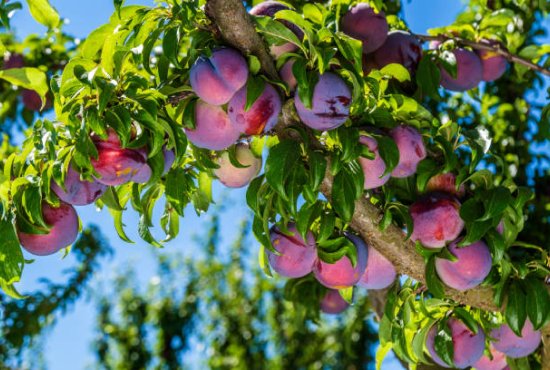Introduction Of Plum
Plum fruit is bright, beautiful, and sweet-tasting without being too overpowering, making them an excellent choice for both healthy eaters and those with refined palates. More specifically, they’re actually from the same family as apricots, peaches, and nectarines, but that’s where the similarities end. Although plum fruits are less popular than other stone fruits like peaches and apricots in the United States, these little guys should be more widely recognized for their taste and nutritional benefits. Let’s get started on learning all about plum fruit!

How to grow plum
Plums trees are some of the easiest fruitsto grow. You can even keep a fruit tree in a container and take it inside for winter if you live in an area that doesn’t get much sunlight during those cold months. It will grow outside year-round if you live in an area with mild winters, but that’s not necessary because most types of plums are self-pollinating (they have male and female parts). The only other thing you need to do is pick off any plum fruit that falls from your tree—it’s extra work, but because plums tend to be low-maintenance plants, we promise it won’t be too bad!
Plums reach in a variety of sizes, shapes, and colours. From deep purple to bright red to yellow and green, there’s something for everyone when it comes to plums. Most varieties have a sweet taste that isn’t overpowering. Unlike apricots and nectarines, plum fruit is mostly seedless. And because plum trees are generally easier to grow than other fruit trees, you may be able to incorporate them into your landscape relatively easily. For example, growing plums on your property can be especially attractive if you want homegrown fruit year-round; many types of plums grow well in colder climates as well as warmer ones.

The Health Benefits
Plums are packed with nutrients, making them a powerful addition to your diet. They’re one of only three fruits (apricots and peaches are the others) that contain vitamin A. They also offer fiber, protein, and antioxidants. Plums have been linked to several health benefits including lower cholesterol levels and decreased risk of diabetes. Plus, they taste great! You can eat plums raw or you can use them in cooking to enhance the flavour as well as nutrition—just be sure not to overdo it. While you can eat up to 25 plums per day without side effects, more than that may cause diarrhea or stomach discomfort for some people.

How to Store and Eat Them
Plums are soft fruit that contains a large pit. With that in mind, you should keep them away from hard fruits and vegetables, like apples, or else they may bruise. Store your plums at room temperature for up to one week. Once ripe, plums can be kept in an airtight container for up to 10 days. If you have more than you’ll eat within that time frame, place them in single layers of paper towels with dry ice on top (dry ice will quickly cool them). Don’t use newspaper because it leaves ink on your plums.
Like other stone fruits, plums can be purchased in several ways. The best ones are usually in season during late summer and early fall when they have a sweet and tangy flavour that’s great for fresh eating or canning. Look for plums that are firm, but not hard—softness is an indication of overripens. Green plums won’t ripen once they’ve been picked.
Avoid those with surface blemishes or bruises; these will darken with time and eventually spoil, even if kept in a cool place with proper air circulation and handled carefully during storage. Make sure to look at every single plum before purchase because you don’t want to buy one that has already begun spoiling inside its skin!

